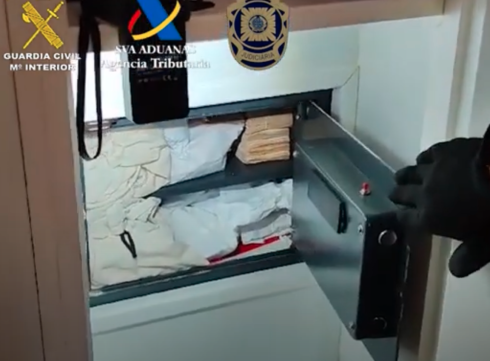UPSTANDING MEMBERS
APPLE Corporation has just released their newest product, the iPhone. If Apple is to believed, this revolutionary new communications centre not only handles phone calls, messages and internet traffic but plays back films and music, doubles as a movie studio and makes your bed, cooks a meal and gives you a back rub after a hard day at the office.
Apple made a load of bucks from their iPod and probably will from their iPhone. I believe the company is also about to launch a new range of men’s underwear called iFronts. But the big money these days seems to be in latex prophylactics and I am sure it will not be long before Apple comes out with the iCon, or Intelligent Condom. The latter should not to be confused with neoCons, though both are umbrella terms describing a covering for dick-heads.
My broker faxed me a one-line recommendation the other day: “Get into condoms.” There was a strong rumour in the markets about the possible take-over of a famous prophylactic company by Microsoft. Bill Gates, head of the biggest corporation in the Universe, had decided to diversify his interests and felt his expertise in software and hardware would have obvious marketing advantages in the condom business.
Gates is apparently sick of making billions of dollars with products obsolete fifteen minutes after they have been put on the market. Condoms interest him because they have remained fairly much unchanged since the 18th century and he believes they could be marketed without any appreciable research and development cost. He also hopes to use a lot of the silicone from obsolete chips in their manufacture. Gates is so pleased
about the new venture he has decided to allow people to buy his rubbers, even if they do not use his internet operating system on their computers.
Sir Richard Branson is also marketing condoms. Branson, like Gates, usually has a nose for sure things. Of course, the failed round-the-world hot-air balloon attempts put his nose out of joint somewhat. Branson allots some of the blame for the unsuccessful balloon attempts on Colonel Ghaddafi, who would not allow him to drift over Libya. The Libyan leader had heard Branson’s balloon was made from recycled Virgin condoms and was determined Branson should not defile his air space. Condoms have often been used as a political weapon and the Amputee has reason to believe George W. Bush has recently included condoms in the sanctions the US has levied against unfriendly powers such as Iran, North Korea and Michael Moore.
SHERRY BLOSSOM
I want to write a few words this week on the aromatic wines of Jerez, known in British common rooms as sherry. “I say, Nigel, another drop of sherry?” But in Spain, sherry is not only appreciated by academics and seconded first-secretaries; plumbers, bullfighters, lawyers and litigants, goal-keepers and goat-herders habitually order a fino in their local (bar). Fino is the classic aperitif of Andalucía and the perfect partner to a tapa.
Jerez, in western Andalucía, has been producing wines for more than 3,000 years and the Phoenicians, Greeks, Carthaginians, Romans and Visigoths all squeezed the local grapes. The Moors arrived AD 711 and stayed for 500 years. Although they did not officially partake of alcohol, they certainly dried the grapes into raisins for use in cooking. During the Moorish occupation, Christians still made wine and, when Jerez was recaptured from the Moors by Alfonso the Wise in 1264, the town became known as Jerez de la Frontera, as it marked the frontier between Christian and Muslim Spain. Jerez shipped its wines out of nearby Cadiz, a port ideally placed between the Atlantic and Mediterranean.
The British love affair with Jerez wines can be traced back to the 12th century but it was Sir Francis Drake’s raid on Cadiz in 1587 gave the trade an unintentional boost. Sir Francis made off with 3,000 barrels of “sherris-sack,” took them back to England and cornered the market. The Brits decided sacked sack was a good drop (“half-pennyworth of bread to an intolerable deal of sack” wrote young Will in one of his plays) and set up trading companies to deal with Jerez. They could hardly raid the place every time they found their stocks running low. “It is because of these repeat orders the wineries of Jerez are liberally sprinkled with English-sounding names,” writes Elisabeth Luard in the La Ina Book of Tapas. Williams & Humbert, Sandeman and Alexander Gordon are as well-known as Gonzalez Byass and Pedro Domecq in the Jerez phone book.
True sherry comes from only a tiny area of Spain, and there are three reasons for this: the chalky soil there, the unusual climate and a special beneficial wine yeast called Saccharomyces ellipsoideus, known to its friends as Flor. But it is the Solera system of blending and maturing sherries that ensure the Tio Pepe you drink today has the same
qualities it did ten years ago and will continue unvarying as to taste and quality in the years to come. For a fino it works like this: firstly around September the grapes are crushed and the juice extracted. This juice, the must, is allowed to ferment until the following spring, producing a wine that is completely dry. This wine is drawn off into casks known as anadas, containing wine of one year only. The rare yeast or flor, which
occurs only in a few places in the world, covers the surface of the wine with a film if the grower is lucky. This flor does not develop in all casks, and it is possible in adjacent anadas containing wine of the same year and from the same vineyard, one may produce flor and the other will not. No flor, no fino.
The young fino wine matures in the Solera system, which consists of rows of barrels, stacked one on top of another and graduated in age. As Elizabeth Luard describes it: “From time to time, a proportion of the younger wines are drawn into the next oldest and more mature row. This process ensures the perfectly mature fino graduates into the bottle at one end of the Solera, while the younger wines gradually and patiently move up through the education system until they too are mature enough to graduate. There is no shortcut. These wines cannot be ascribed a vintage, since the Solera system is a way of blending wines of different ages, and some Soleras may be over a
century old.”
Fino has been described poetically as “sunshine in a cask” and should be served chilled in slender, narrow-topped glass. Like all sherry, it is best drunk within a few days of opening the bottle. For this reason most of the better finos are available in half bottles. Always offer a tapa or two with the sherry: algo para picar – something to nibble on. Sherry is still one of life’s great bargains: a bottle of good fino costs as little as six euros and some perfectly acceptable ones as little as three.






